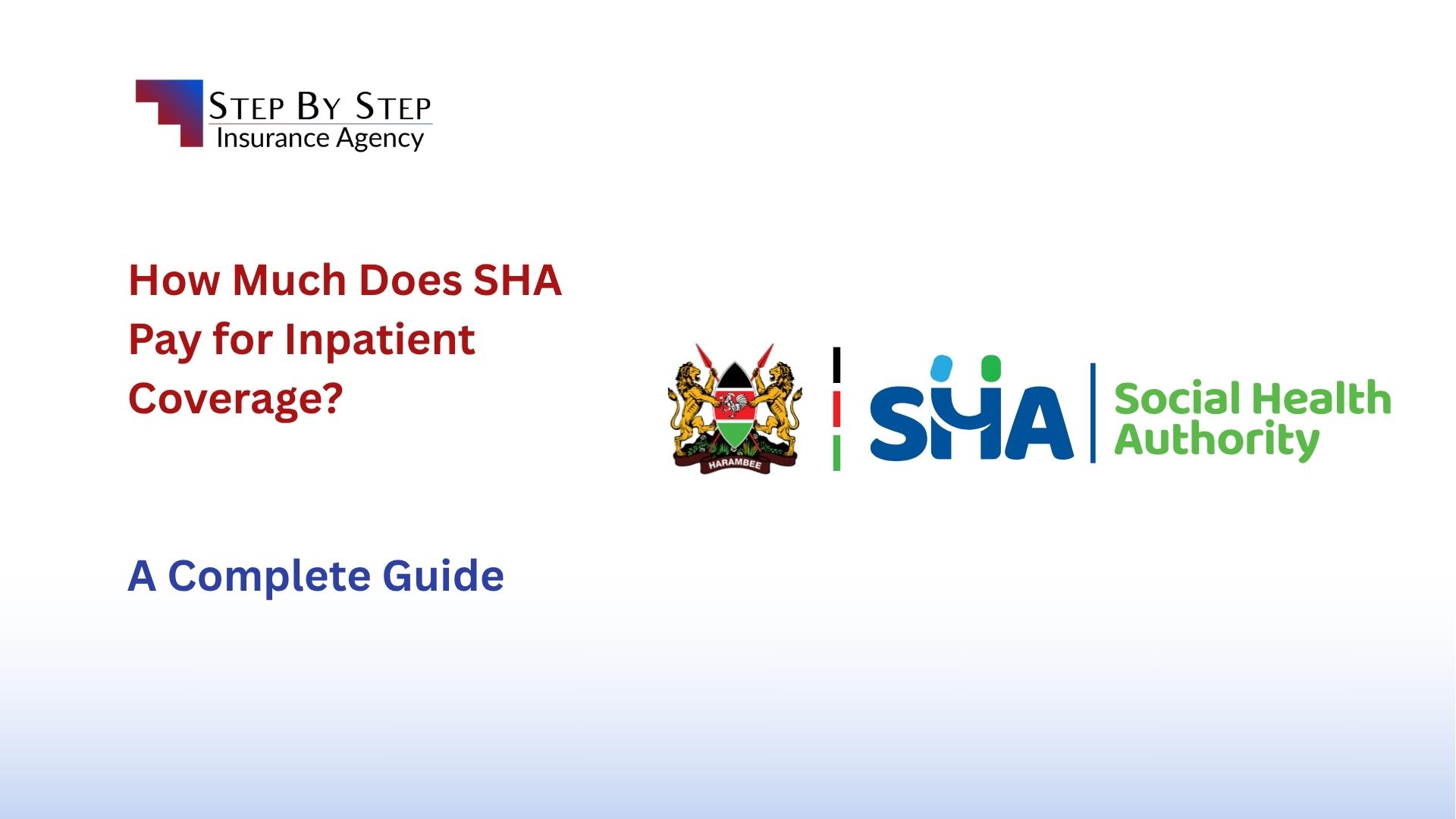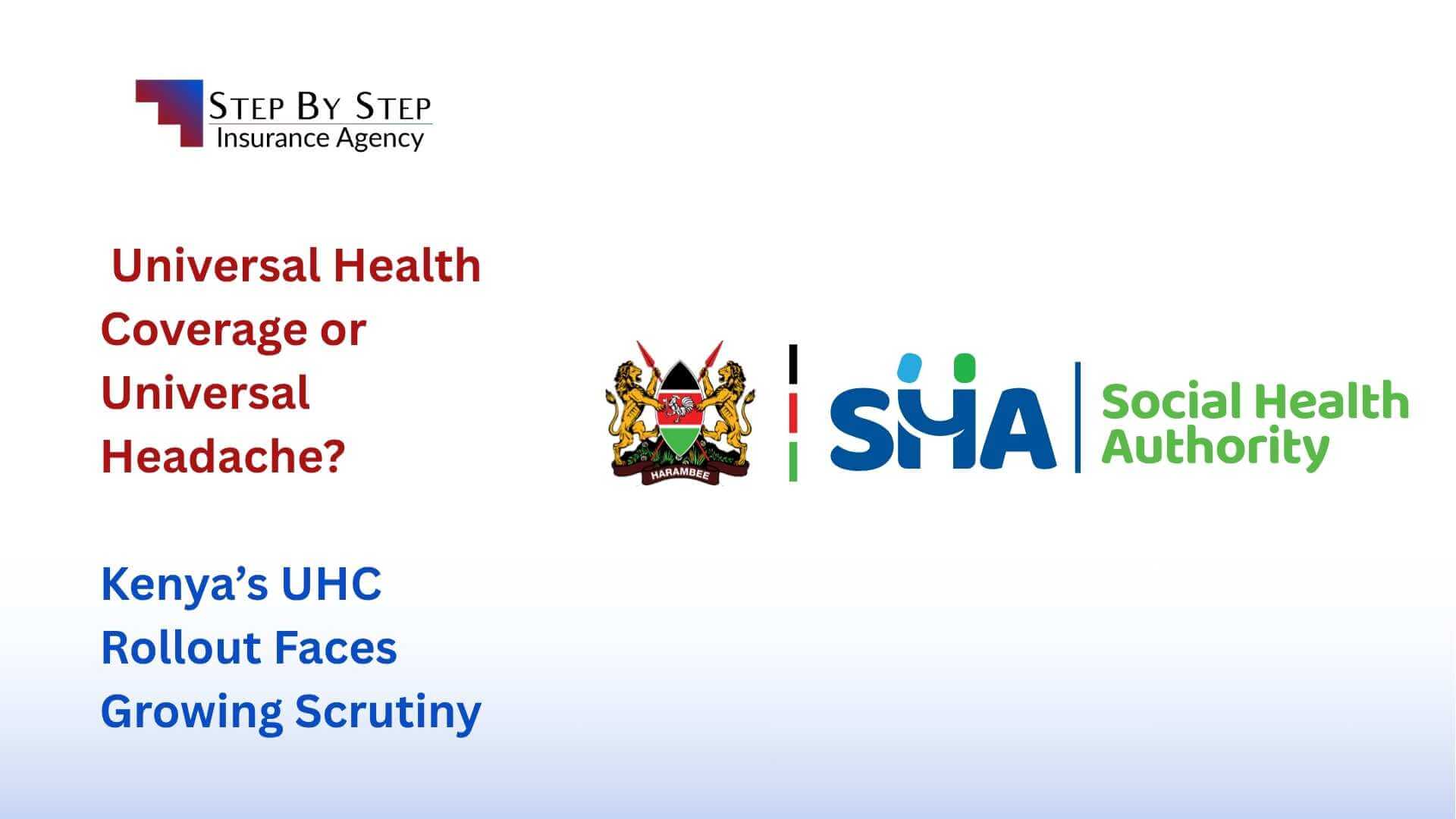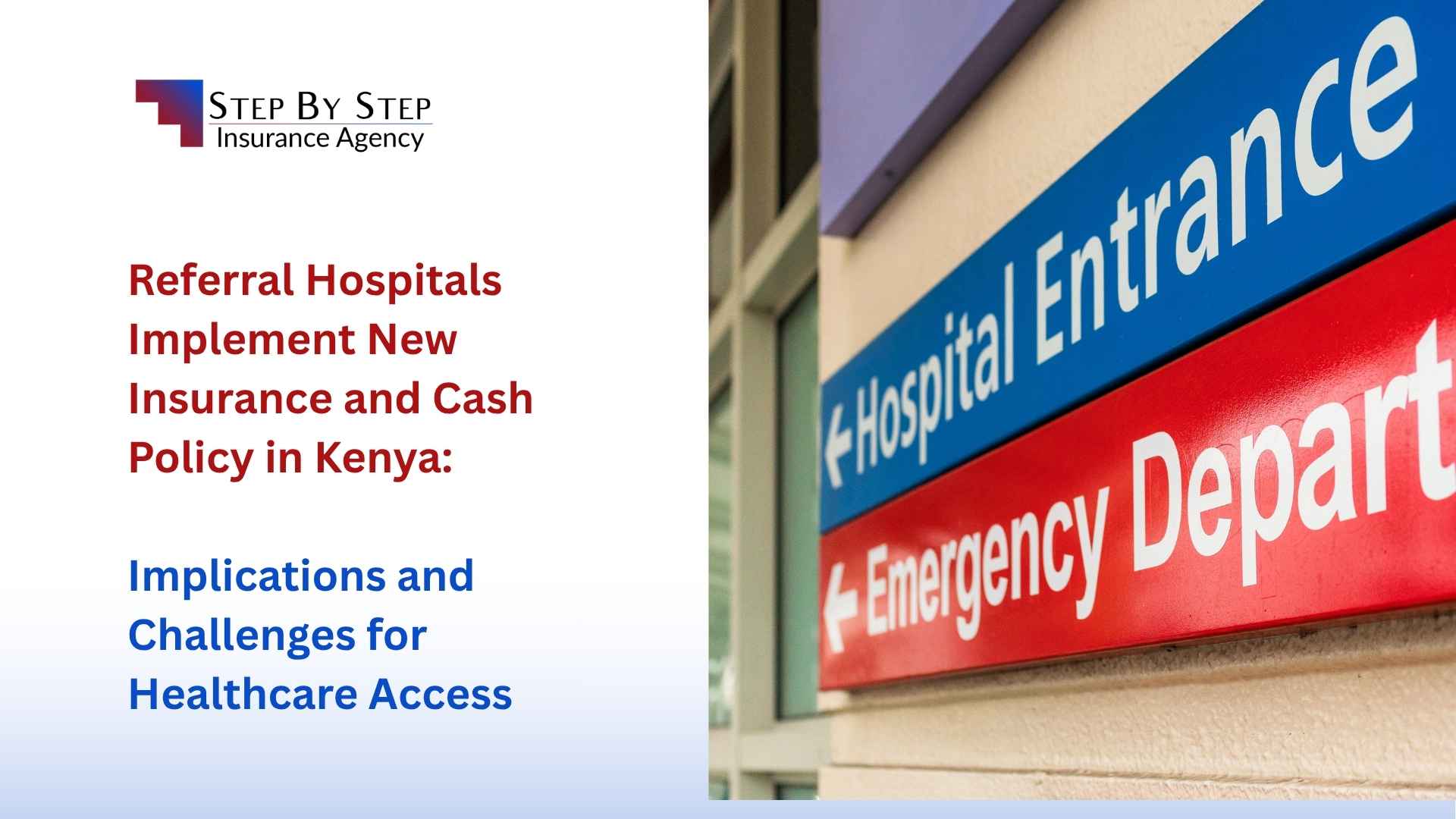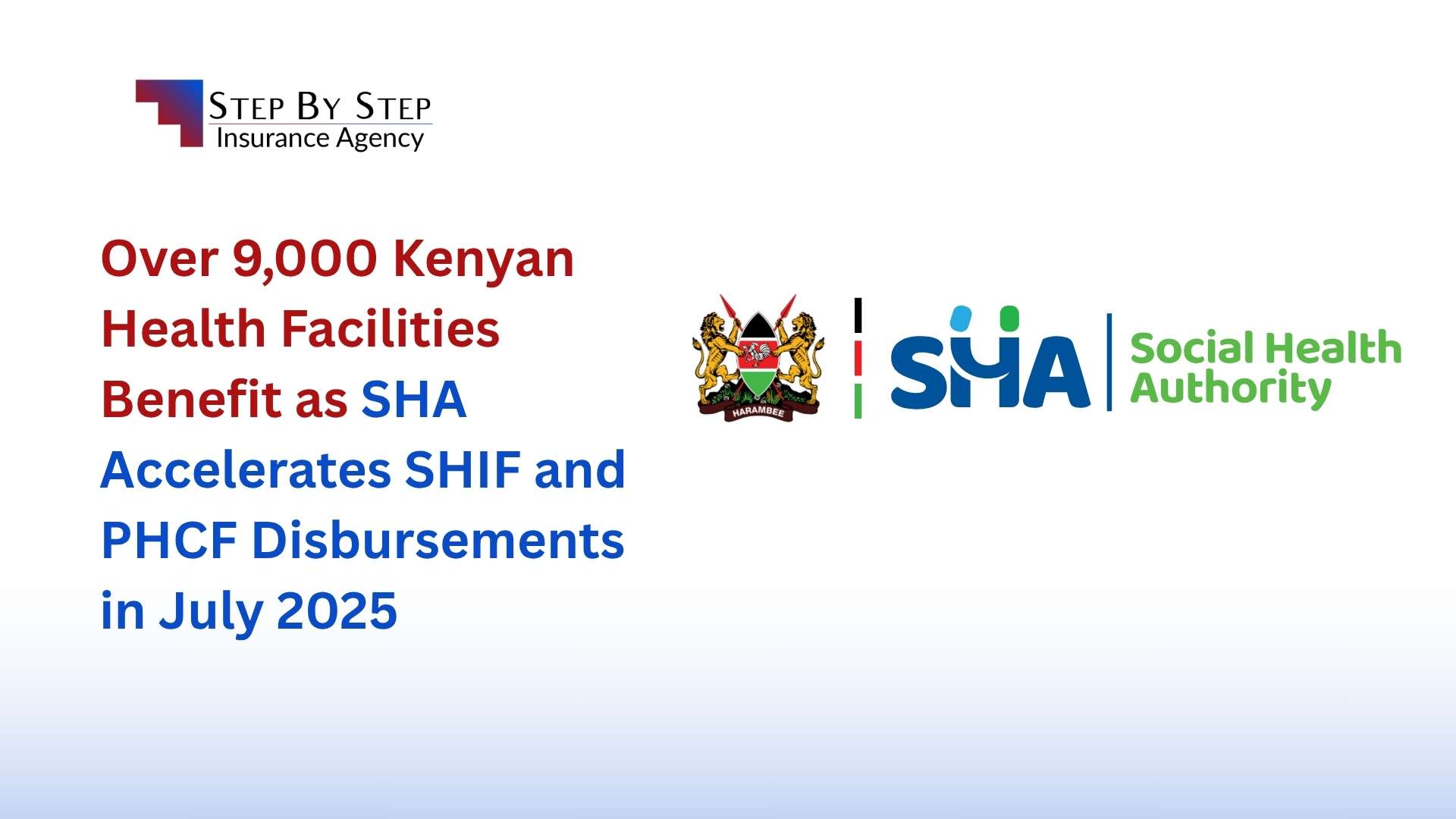How Much Does SHA Pay for Inpatient Coverage? A Complete Guide
The Social Health Authority (SHA) in Kenya represents a pivotal advancement in the country’s journey toward universal health coverage (UHC). Launched officially in October 2024, it replaces the National Hospital Insurance Fund (NHIF) with a more inclusive and sustainable healthcare financing framework.
This comprehensive article explores in detail how much SHA pays for inpatient services, including surgical procedures, bed charges, other inpatient care elements, household limits, and patient financial responsibility.
Key Takeaways
- SHA provides comprehensive inpatient coverage for surgeries, diagnostics, medications, and supportive therapies
- Surgical coverage is based on published tariffs with patients responsible for differences
- Daily bed charges are standardized by hospital level with clear coverage rates
- Households have an annual limit of 180 inpatient days across all members
- Pre-authorization is mandatory for elective surgeries and specialized services
- Patients should verify hospital contracts to avoid unexpected expenses
Table of Contents
- What is SHA and Its Role in Inpatient Coverage?
- Surgical Procedures Coverage
- Bed Charges and Hospital Accommodation
- Other Inpatient Services Covered
- Household and Duration Limits
- Financial Responsibility – What Patients Should Know
- Examples Demonstrating SHA Coverage Application
- Why Understanding SHA Inpatient Coverage Is Crucial
- Related Articles
- Conclusion: Navigating the SHA Inpatient Landscape
Join Our Insurance Community
Stay updated on the latest insurance trends and news in Kenya. Connect with experts and fellow members!
Join WhatsApp GroupWhat is SHA and Its Role in Inpatient Coverage?
The Social Health Authority (SHA) is a government agency established under the Social Health Insurance Act, 2023. It manages the Social Health Insurance Fund (SHIF) and other related healthcare funds, coordinating how public health insurance payments are allocated to cover health services for Kenyans.
SHA inpatient coverage applies to services received during hospital stays, including surgeries, diagnostic investigations, medications, and supportive therapies. Unlike NHIF, SHA strives to improve transparency, accountability, inclusiveness, and efficiency through a centralized digital platform connected to thousands of contracted health facilities across the country.
Through SHA, Kenyan households gain financial protection against the often catastrophic costs of hospitalization.
Surgical Procedures Coverage
Under SHA, surgical procedures require pre-authorization where applicable, and coverage is based on established tariffs officially published by the Ministry of Health.
- SHA pays the authorized amount for surgeries within contracted facilities
- If a hospital’s charges exceed this authorized tariff, the patient must cover the difference
- The coverage is inclusive of a wide spectrum of surgeries, ranging from minor outpatient procedures, cesarean sections, to major operations such as organ transplants
- Patients are encouraged to confirm if their hospital is under SHA contract and to obtain pre-authorization to avoid unexpected bills
For example, if you undergo a cesarean section in a Level 5 hospital that charges KES 150,000 but SHA’s tariff for that procedure is KES 140,000, SHA pays KES 140,000 while you pay the extra KES 10,000.
Bed Charges and Hospital Accommodation
Bed charges are a significant component of inpatient costs. SHA’s coverage depends on the contractual agreements between SHA and healthcare facilities. The tariffs for bed charges vary by hospital level and typically include accommodation, meals, and nursing care.
| Hospital Level | SHA Daily Bed Charge Coverage (KES) |
|---|---|
| Level 4 | 3,360 |
| Level 5 | 3,920 |
| Level 6 | 4,480 |
Patients must co-pay any charges beyond these contractual tariffs. These rates are standardized to ensure equitable access but may differ slightly by facility depending on specific contracts.
Other Inpatient Services Covered
SHA’s inpatient coverage goes beyond surgeries and bed fees. It broadly covers:
- Consultations and visits by doctors and specialists during hospitalization
- Laboratory investigations and medical imaging, including X-rays, MRIs, CT scans, and ultrasounds, all within contracted rates
- Pharmacological treatments including medications administered inpatient
- Supportive services such as physiotherapy, occupational therapy, oxygen supply, and nutritional support
- Blood transfusions and related services, including administration of blood products and biologics
- Post-discharge follow-up care and prescribed medications, covered as part of the inpatient treatment plan
Coverage extends mainly to Level 4, 5, and 6 hospitals, which are equipped to provide complex inpatient services.
Household and Duration Limits
SHA inpatient benefits come with clear limits, both to protect the fund’s sustainability and manage resources.
- Each household is entitled to up to 180 inpatient days per year across all members combined
- Specific inpatient categories, such as ICU and High Dependency Unit (HDU) stays, have daily payment limits aligned with hospital levels
- For example, ICU daily coverage is KES 3,360 at Level 4 hospitals, KES 3,920 at Level 5, and KES 4,480 at Level 6 hospitals
- Beyond the 180-day limit, co-payments or full out-of-pocket payments apply
- Special care areas like mental health inpatient treatment, substance abuse rehabilitation, and cancer management may have additional or distinct limitations
By instituting these limits, SHA aims to balance comprehensive care accessibility with fiscal prudence.
Financial Responsibility – What Patients Should Know
Patients should be aware that SHA coverage depends highly on contractual agreements with the hospital and adherence to established tariffs. This entails:
- Always confirming if the hospital and specific treatment are covered under SHA contracts
- Understanding that pre-authorizations are mandatory for elective surgeries and specialized inpatient services
- Preparing for any difference in charges where hospital bills exceed SHA-tariffed amounts
- Reviewing inpatient days used to avoid surpassing household limits which would trigger additional charges
The SHA’s move to digitize and centralize claims and payments helps patients track coverage and identify potential shortfalls early.
Examples Demonstrating SHA Coverage Application
Caesarean Section: A patient admitted to a Level 5 hospital for a C-section pays no more than the SHA authorized tariff if the hospital charges align. If the hospital’s fee exceeds the tariff, the excess is out-of-pocket.
ICU Stay: A patient admitted to ICU at a Level 6 hospital gets coverage up to KES 4,480 per day from SHA for a maximum of 180 days annually across the household.
Lab Investigations: Routine and specialized tests done during admission are paid within tariff limits, shielding patients from exorbitant diagnostic costs.
Why Understanding SHA Inpatient Coverage Is Crucial
Knowledge of SHA inpatient coverage is vital to prevent surprise expenses during hospital stays. The system is designed for financial risk protection but works best when patients:
- Understand their coverage entitlements
- Comply with authorization requirements
- Choose SHA-contracted facilities
- Monitor utilization of inpatient days
Overall, SHA enhances access to affordable inpatient care but demands active engagement by patients for optimal benefit.
Verifying the date of published content is important to ensure you get the most recent SHA policies, as these may evolve with regulatory changes and funding adjustments.
Related Articles
Contacting the Social Health Authority
- Toll-free number: 0800 720 601
- Email: customercare@sha.go.ke or info@sha.go.ke
- Headquarters: Ground Floor, SHA Building, Ragati Road, Nairobi City
Other branches include: KNH Hospital, Eastleigh, Westlands, Kangemi, Buruburu, Gikomba, Mama Lucy Kibaki Hospital, Industrial Area, Ruaraka, Kabarnet, Eldama Ravine, Sotik, Bomet, and Bungoma.
Official SHA Resources
- SHA Official Website – The primary source for official information, updates, and resources
Conclusion: Navigating the SHA Inpatient Landscape
The Social Health Authority marks a transformative step for Kenya’s healthcare financing, especially for inpatient care. Its structured inpatient coverage system offers considerable financial relief, from surgeries and bed charges to diagnostics and supportive treatments. However, patients need to understand contractual limits, authorization rules, and co-payment responsibilities to avoid unexpected expenses.
For Kenyans and healthcare seekers, being proactive—by verifying hospital contracts, monitoring inpatient day usage, and searching with optimized keywords—can unlock the full potential of SHA benefits.
As Kenya continues to strengthen SHA, stakeholder feedback and evolving regulations promise more refined inpatient coverage, aiming for universal health access without financial hardship.
If you want to stay updated or clarify your inpatient health insurance rights, begin your research with the recommended keywords and official SHA portals. Access to transparent, current information empowers you to make confident health decisions, maximizing the benefits of this landmark reform.
This article uses up-to-date official resources and government publications from 2024-2025, ensuring authoritative and comprehensive coverage of SHA inpatient payments.
important disclaimer
we are not affiliated with shif/sha
We are a private insurance company dealing with various insurance products including affordable medical insurance that can be bundled with SHA to give you the best coverage. For SHA inquiries, contact The Social Health Authority (SHA) in Kenya at their toll-free number: 0800 720 601 or email: customercare@sha.go.ke / info@sha.go.ke.






